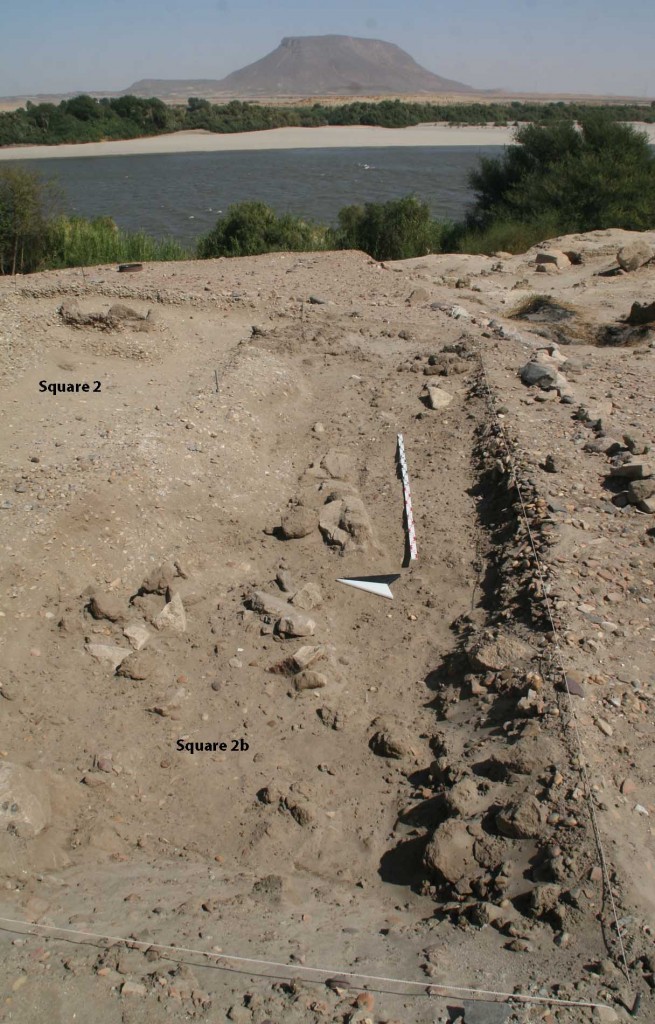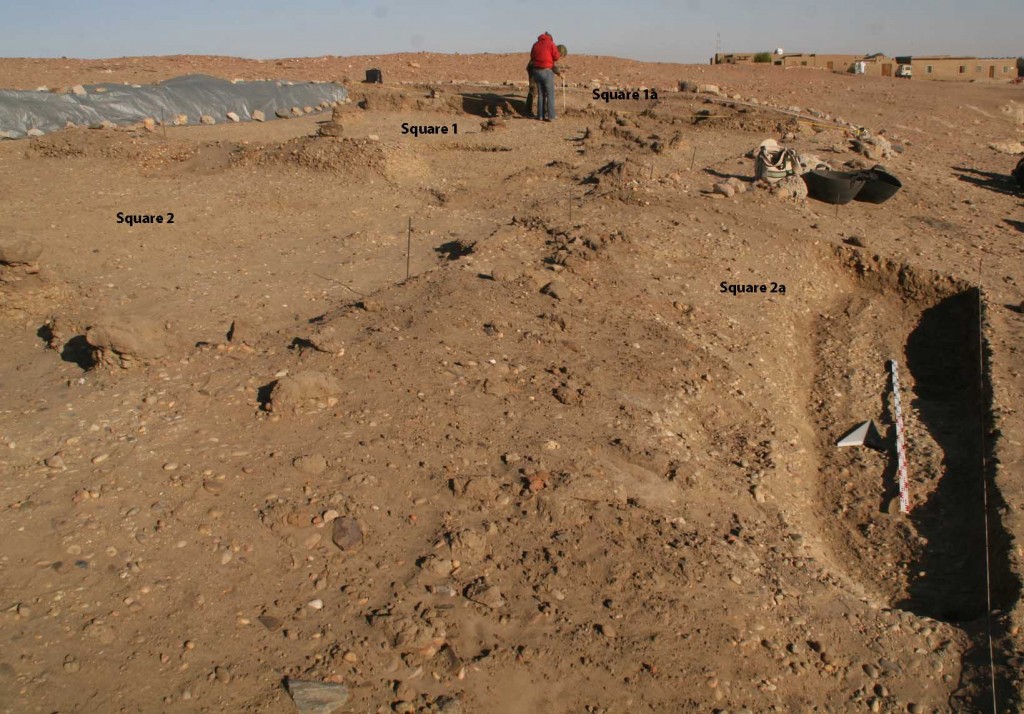Simultaneously with the 2013 excavation in SAV1E, the East sector within the Pharaonic town of Sai Island, the processing of the ceramic material was being carried out and will continue in the next weeks. Especially the New Kingdom material still has to be recorded in detail, with entries in the database and by drawings. But some basic characteristics of the material can already be outlined as follows: 279 find numbers of sherds (counting between just a few sherds and 10 baskets full of fragments) were sorted and processed – a total of 29.178 pieces comprised 16.972 sherds of Post-New Kingdom origin (58 %), mostly of Post-Meroitic, Medieval and Ottoman date. This large percentage of Post-Pharaonic material is changing from one square to another: following the sloping landscape of SAV1E, the shallow deposits in Square 1a to the North are mostly Post-Pharaonic, whereas the material from the deep depression south of Building A, especially in Square 2b to the South contained 60 % of 18th Dynasty ceramics!
The general distribution of the ceramics within SAV1E can be illustrated as:
Square 1a (10 x 2 m) 22 %
Square 1 (10 x 10 m) 27 %
Square 2 (10 x 10 m) 10 %
Square 2a (2.5 x 6 m) 8 %
Square 2b (10 x 2 m) 33 %
The squares with the least preserved features – square 2, and here especially its northern part, and square 2a – are together just responsible for 18 % of the material, whereas the small square 2b (10 x 2 m) yielded 33 % of the material. Although the material retrieved from this square 2b was mixed until the lowest level excavated so far, it comprised a total of 5.786 New Kingdom sherds, counting up to 60 % of the pottery from the square and to 47 % of all of the New Kingdom material from SAV1E!

Overview of Southern part of SAV1E, showing square 2b during the course of excavating dense dump deposits
I would like to associate this fact with the nature of the archaeological deposit in square 2b as massive dump layer comprising obviously rubbish from both Building A as well as from the adjacent area to the South, just north of temple A. This zone north of Temple A yielded interesting mud brick features, recently published by M. Azim in CRIPEL 29, and obviously datable to the very early history of New Kingdom activity on Sai Island.
Summing up, the percentage of New Kingdom material increases towards the South of SAV1E, closer to Temple A and decreases towards the North (Square 1a and Square 1). Except for a small number of Ramesside sherds, all of the New Kingdom pottery from SAV1E can be dated to the early to mid 18th Dynasty. Further analysis will focus on the question whether there is any functional difference within this New Kingdom corpus according to find positions – be it in respect to shapes and forms or to wares and fabrics.

